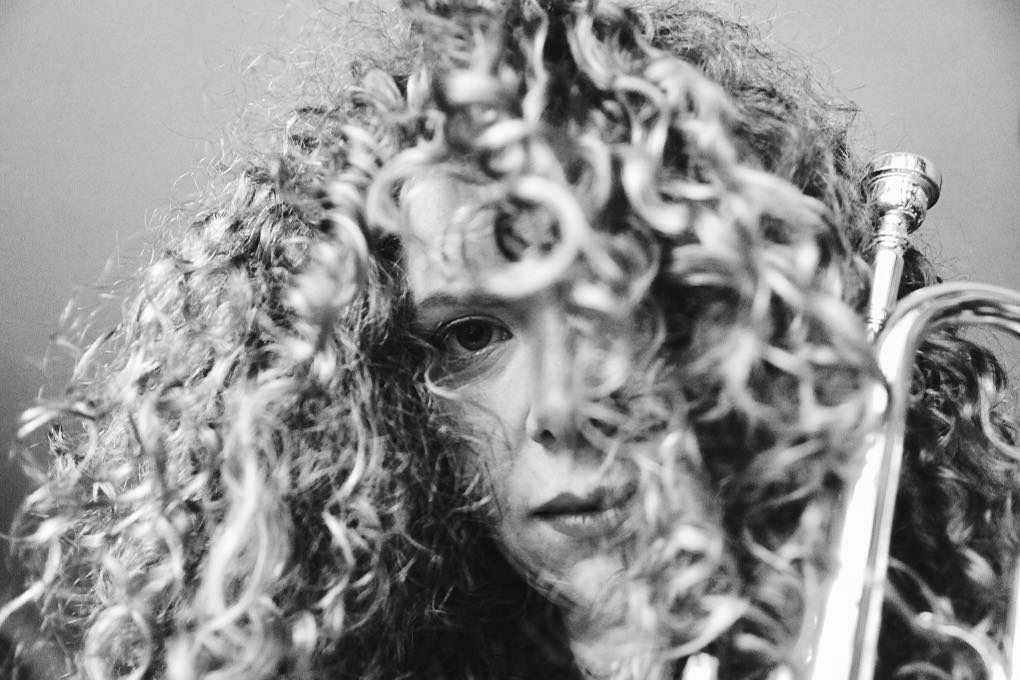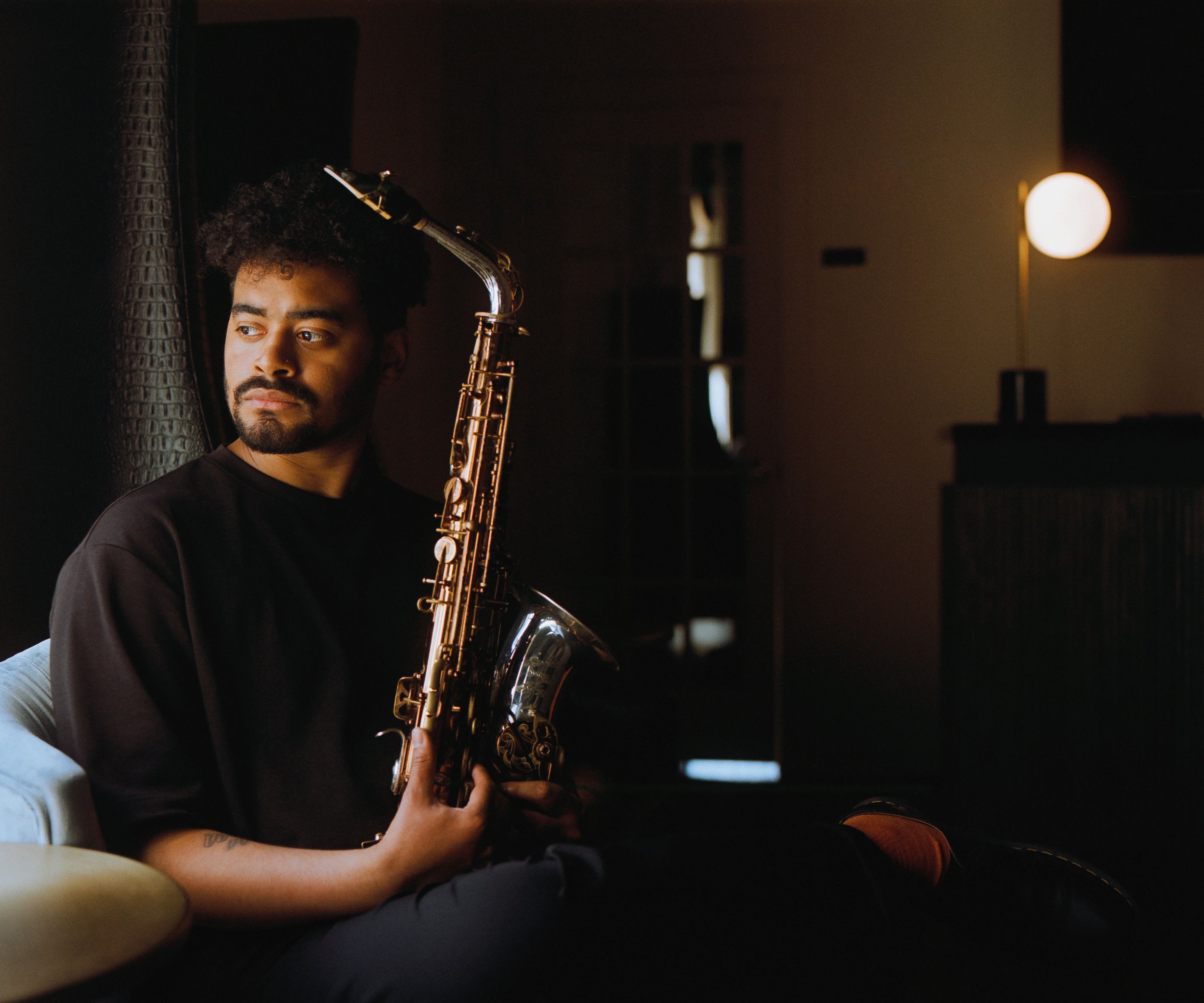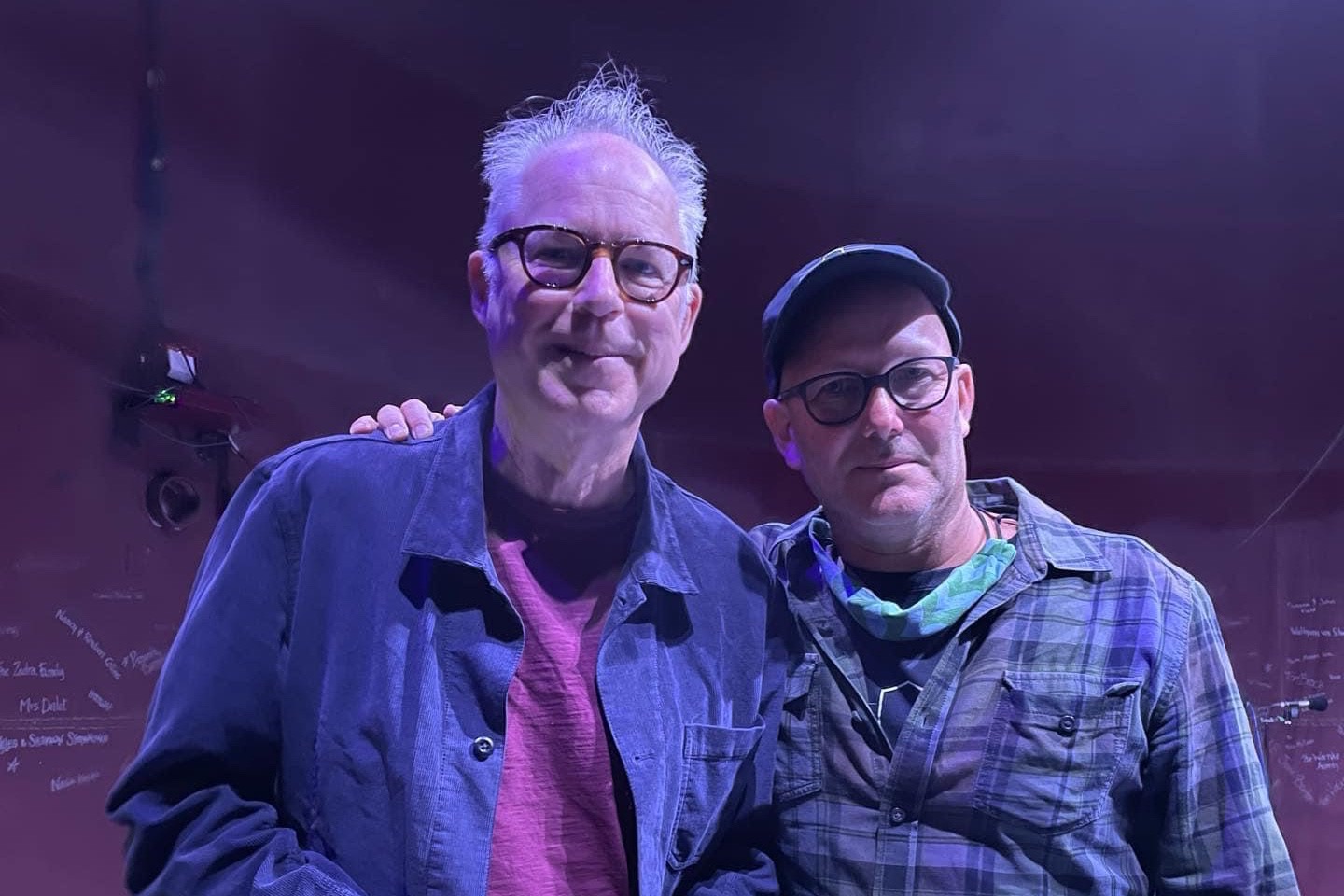Physical Expression: A Conversation with Steph Richards on ‘Power Vibe’
|
Getting your Trinity Audio player ready...
|
Far too often, people perceive music as a solely auditory experience, something heard but which does not affect the rest of the listener’s body. The reality, however, is far more complex. One can physically feel the energy of acoustic waves. It is a large part of why the audibly impaired still appreciate music, even when they cannot technically hear it. Musical vibrations also have significant psychological and physiological benefits as well. Listening to music releases neurotransmitters and hormones that can trigger emotional reactions and memories. Musical therapy has built upon this base to provide relief to those suffering from anxiety, depression, Multiple Sclerosis, Parkinson’s Disease, dementia, and more. Despite all this, many generally understate the physical aspects of music. Seldom outside musical therapy are such elements discussed. Trumpeter Steph Richards, as most recently seen on Power Vibe (Northern Spy, 2024), has been attempting to change that.
Sharing its name with a platform that applies high-speed vibrations to parts of the body to allow chiropractors to pinpoint sources of pain, Power Vibe is an album built around sensory electronics. These electronics, controlled by Max Jaffe, are triggered not by other sounds but by physical movement. They are subtle additions to the otherwise quartet ensemble – Richards with pianist Joshua White, bassist Stomu Takeishi, and drummer Gerald Cleaver – but viscerally move the record to somewhere beyond merely something you can hear. Throughout Power Vibe, one perceives they are experiencing something more than just a listening opportunity. The recording is consistently keeping the listener in motion. Hence, the urgent title track gives the listener the sensation of being thrown around the room. “Reculez” is much more subtle but feels like you are on a steadily rocking transport passing through changing terrain.
Richards has a unique take on the intersection between the audible and the physical, partly because of her own bodily struggles to make music. Health issues caused muscular freezing, requiring her to relearn how to play her instrument in ways that would not use the damaged muscles. However, her interest in the interdisciplinary explorations of the sensory elements of music predates such setbacks. Richards’ SUPERSENSE (Northern Spy, 2020), honed in on the connection between smell and sound. Her duo record with White, Zephyr (Relative Pitch, 2021), examined the relationship between visually observing water movement and hearing sound. The boldness of Richards’ expansive scope has made her not only a composer to watch but also a go to collaborator for many greats of improvised music, including Butch Morris, Henry Threadgill, Muhal Richard Abrams, Anthony Braxton, Roscoe Mitchell, and John Zorn.
PostGenre: Before this interview, you mentioned you were researching something about [Miles Davis’] Bitches Brew (Columbia, 1970).
Steph Richards: Yeah, I teach a class on electric Miles. I wanted to dig into his whole electric period. My next lecture is on Bitches Brew, so I was digging deep into the editing space for the record. It was so rad that Miles was into the idea of recording an almost free-flowing super-long session and remaking it into something else. It is something that many musicians do now, but it’s so cool to nerd out on the record’s actual timings and production aspects.
PG: Bitches Brew used things like cutting pieces of recorded music and then rearranging them to create new sounds. In a somewhat similar vein, with Power Vibe, you are incorporating electronics into your music. What inspired you to add electronics to the recording?
SR: Well, I had been touring the music with the drummer Max Jaffe. On tour, we used his sensory setup out of creative exploration. I recorded the record a few years ago when we were touring. Our last tour was last fall, and we traveled all over Europe. And using his sensory electronics on that tour made me start to hear the music in that way. So when I went in to do the final master of the record, I walked it back and decided we needed to add the electronics. I think my ears had already moved forward. So, Max added electronics. And me and the producer, Andrew Munsey, both dug in, ripped apart everything Max gave us, and reintroduced it. Much like Teo Macero, actually.
And Max is so cool. He’s such a beautiful musician. He’s so generous and open to making it work. And we went to town. We greatly wanted to keep the electronics subtle.
PG: So, did you always intend for the electronics to be more subtle and not so overt?
SR: My initial impulse was to make the album more like a hyper-pulse dance-focused record. I initially tried it out as being hyper-overt. Almost too much. I kept telling Max to give me more. Asking him to give me two grooves on top of each other, in different time signatures. I was very interested in the hypercomplexity of pulse. But, over time, the electronics became more and more subtle, and we ended up reining them in for the final version.
PG: Do you see a connection between these sensory electronics and SUPERSENSE (Northern Spy, 2020), where you explored the relationship between smell and sound?
SR: For sure. I’m more interested in the body and how we hear with our skin than anything else. Music isn’t simply aural but also felt. It is a vibration that’s felt. I’m very interested in the physical experience of music and the physical expression of it. That is why I was very interested in working with Max on this sensory setup. The electronics get triggered by physical movement, not sound. It’s not aural-based because I think you’re missing half of the formula when you’re only working with aural material.
PG: But in terms of the aural part, the band on Power Vibe moves around based on sonic cues.
SR: Yeah, we did. We also used some visual cues in the session. But yeah, it’s mostly sonic.
PG: How did you develop those cues?
SR: Well, I worked a lot with Butch Morris before he passed away. This is going to be a bit of a stretch to try to link the dots, but Butch’s whole approach was real-time construction using physical gestures. I wanted to try to create that same sense of possibility with aural cues. With those cues, there were so many different directions we could go. Everyone in the band was at liberty to move and direct things to where they heard them. And I think that openness changes the vibe by creating a personal stake in leadership for everyone in the band.
I think approaching music with cues in that way can lead to some very interesting directions. Even in the studio, we had some charts, some of which were composed in a very linear way, where it starts at the top of the page and ends at the bottom. But I always tried to push against that and find ways to make it as non-linear as possible while still maintaining the composition’s structure. I wanted to see where it could go if we rip out the linear aspect. And that’s where the aural cues came into play.
Using the cues is also super fun. When we play live, we never have a setlist. We just start playing, which means we really could go anywhere. We can play several tunes against each other at the same time.And maybe then someone gives an aural cue when someone else doesn’t want to go there. That’s OK too. We can be in two different places at once. It’s very nice. But it also means you need some beautiful players who are willing to jump in. I will credit all the players on the album as being very beautiful.
PG: So, you took Butch Morris’ conduction as an inspiration for the use of cues?
SR: Yeah, for sure.
PG: It is interesting that you worked with Morris towards the end of his career. Brandon Ross, who was in the first conduction, has indicated that, over time, conduction became very detailed and very specific. But it seems what you are doing is not as structured.
SR: Well, that’s interesting Brandon would say that. I’ve known Brandon for a long time. I met Brandon through Butch, actually. But I think what I am doing is just different from what Bitch did. I think we’re both trying to tap into that same space of possibility and interdependence but doing so in different ways.
In some ways, my approach was more structured because the notated materials were very specific, either rhythmically, melodically, or harmonically compared to Butch’s work which had less of those notated specifics. But in another way, Butch wanted to call every single shot. I prefer leadership to be more fluid. I’m happy to be upfront and push things when I hear them, but I’m also totally excited when other people take things in another direction.
PG: You have worked with [Anthony] Braxton and [Henry] Threadgill. Both are incredible composers. Do you feel you’ve picked up anything from those experiences in terms of shaping your own writing?
SR: Yeah. For one thing, the impetus driving their ideas is a constant push for revelation. My experience working with both of them has been that they make you peel away all of your exterior habits and assumptions to become much more exposed and raw. They do that in both the ways that they compose and how they lead their projects. Threadgill’s music is hyper-complex and doesn’t leave much space to explore. I think the fact you’re just trying to get by and through all that complexity exposes something real. Both Threadgill and Braxton have had massive influences on me, not only compositionally, but also as spiritually beautiful humans.
PG: To throw out the name of another great composer out there, you dedicated “Power Vibe” to Wayne Shorter. You didn’t work with him, correct?
SR: Oh, that’s so funny. Yeah, I didn’t work with him. But I love Wayne Shorter. I didn’t know him personally, but the biggest thing is a piece of his called “Beyond the Sound Barrier,” which is on his live recording of the same name (Verve, 2005). Part of the structure of “Power Vibe” came from his piece. Wayne passed away not long before we recorded, and I thought it would be great to honor him and recognize all he’s given me through his music.
PG: You also included a live version of “Supersense” on the album. What was behind the choice to add that piece?
SR: So, the core of that track is a [Igor] Stravinsky piece. He wrote several piano pieces that are very simple explorations of bitonality but very beautiful. That track was recorded at a great gig we played over in Italy. I wanted to dedicate a part of the album to having Max play [drum] set. And I thought the track was very beautiful. There’s a big chunk of that track where we’re moving between some of the cues from Supersense, which can cue different rhythmic grooves and tempos. But then we’re also adding very lullabyesque elements from Stravinsky in there. It’s incredible.
PG: One thing that we should probably also mention is that you had to change your approach to the trumpet for this recording due to your muscular collapse and hints of potential focal dystonia, a neurological condition that causes muscular freezing. Was it difficult to adapt?
SR: Yeah, I had to fully relearn and play with my new face. I needed to redo everything I was used to before. It took a long time. And my diagnosis was completely top secret. I didn’t talk about it. No one else knew because I was so terrified. I played on my old face as best as I could for all my public gigs. And then, in the shed, very quietly and secretly, I would figure out how to remake my face and play with different parts of it to find a better and stronger way to play. At the time, it was all terrifying. What I love when I listen to this record is that I can hear that I’m relishing in all of these more physical techniques. Things like lip trills. I can hear my joy of being able to play those things without pain. The music can always find a way through pain and change.
‘Power Vibe’ is out now on Northern Spy Records. It can be purchased on Bandcamp. More information on Steph Richards can be found on her website.
Photo credit: Sirius Pakzad



